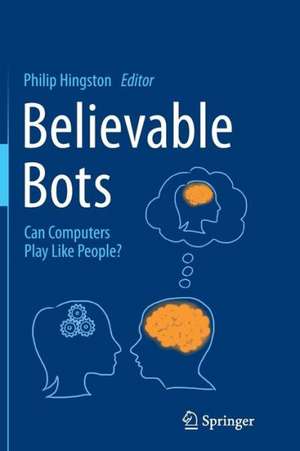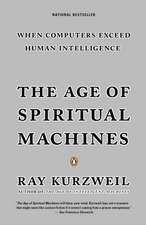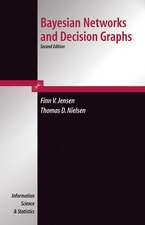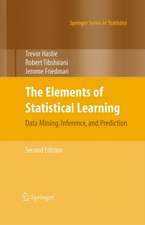Believable Bots: Can Computers Play Like People?
Editat de Philip Hingstonen Limba Engleză Paperback – 9 noi 2014
The chapters in this book present the state of the art in research on and development of game bots, and they also look beyond the design aspects to address deep questions: Is a bot that plays like a person intelligent? Does it have emotions? Is it conscious? The topic is inherently interdisciplinary, and the work draws from research and practice in many fields, such as design, creativity, entertainment, and graphics; learning, psychology, and sociology; artificial intelligence, embodiment, agents, machine learning, robotics, human–computer interaction, and artificial life; cognition and neuroscience; and evolutionary computing. The contributing authors are among the leading researchers and developers in this field, and most of the examples and case studies involve analysis of commercial products.
The book will be of value to graduate students and academic researchers in artificial intelligence, and to engineers charged with the design of entertaining games.
| Toate formatele și edițiile | Preț | Express |
|---|---|---|
| Paperback (1) | 647.13 lei 6-8 săpt. | |
| Springer Berlin, Heidelberg – 9 noi 2014 | 647.13 lei 6-8 săpt. | |
| Hardback (1) | 653.56 lei 6-8 săpt. | |
| Springer Berlin, Heidelberg – 20 oct 2012 | 653.56 lei 6-8 săpt. |
Preț: 647.13 lei
Preț vechi: 808.91 lei
-20% Nou
Puncte Express: 971
Preț estimativ în valută:
123.84€ • 134.48$ • 104.03£
123.84€ • 134.48$ • 104.03£
Carte tipărită la comandă
Livrare economică 22 aprilie-06 mai
Preluare comenzi: 021 569.72.76
Specificații
ISBN-13: 9783642445958
ISBN-10: 3642445950
Pagini: 328
Ilustrații: X, 318 p.
Dimensiuni: 155 x 235 x 17 mm
Greutate: 0.46 kg
Ediția:2012
Editura: Springer Berlin, Heidelberg
Colecția Springer
Locul publicării:Berlin, Heidelberg, Germany
ISBN-10: 3642445950
Pagini: 328
Ilustrații: X, 318 p.
Dimensiuni: 155 x 235 x 17 mm
Greutate: 0.46 kg
Ediția:2012
Editura: Springer Berlin, Heidelberg
Colecția Springer
Locul publicării:Berlin, Heidelberg, Germany
Public țintă
ResearchCuprins
Chap. 1 Rethinking the Human-Agent Relationship: Which Social Cues Do Interactive Agents Really Need to Have?.- Chap. 2 Believability Through Psychosocial Behaviour: Creating Bots That Are More Engaging and Entertaining.- Chap. 3 Actor Bots.- Chap. 4 Embodied Conversational Agent Avatars in Virtual Worlds.- Chap. 5 Human-Like Combat Behaviour via Multiobjective Neuroevolution.- Chap. 6 Believable Bot Navigation via Playback of Human Traces.- Chap. 7 A Machine Consciousness Approach to the Design of Human-Like Bots.- Chap. 8 ConsScale FPS: Cognitive Integration for Improved Believability in Computer Game Bots.- Chap. 9 Assessing Believability.- Chap. 10 Making Diplomacy Bots Individual.- Chap. 11 Towards Imitation of Human Driving Style in Car Racing Games.
Notă biografică
Dr. Philip Hingston is an associate professor of Computer Science at Edith Cowan University in Perth. His research interests include artificial intelligence and computational intelligence, particularly evolutionary design, AI and CI in games, sequence modeling, and artificial evolution. Among his publications is the coedited Springer book "Design by Evolution -- Advances in Evolutionary Design".
Textul de pe ultima copertă
We share our modern world with bots – chatbots to converse with, roombots to clean our houses, spambots to fill our e-mail inboxes, and medibots to assist our surgeons. This book is about computer game bots, virtual companions who accompany us in virtual worlds or sharpen our fighting skills. These bots must be believable, that is human players should believe they are interacting with entities operating at a human level – bots are more fun if they behave like we do. This book shows how to create believable bots that play computer games, and it discusses the implications of making them appear human.
The chapters in this book present the state of the art in research on and development of game bots, and they also look beyond the design aspects to address deep questions: Is a bot that plays like a person intelligent? Does it have emotions? Is it conscious? The topic is inherently interdisciplinary, and the work draws from research and practice in many fields, such as design, creativity, entertainment, and graphics; learning, psychology, and sociology; artificial intelligence, embodiment, agents, machine learning, robotics, human–computer interaction, and artificial life; cognition and neuroscience; and evolutionary computing. The contributing authors are among the leading researchers and developers in this field, and most of the examples and case studies involve analysis of commercial products.
The book will be of value to graduate students and academic researchers in artificial intelligence, and to engineers charged with the design of entertaining games.
The chapters in this book present the state of the art in research on and development of game bots, and they also look beyond the design aspects to address deep questions: Is a bot that plays like a person intelligent? Does it have emotions? Is it conscious? The topic is inherently interdisciplinary, and the work draws from research and practice in many fields, such as design, creativity, entertainment, and graphics; learning, psychology, and sociology; artificial intelligence, embodiment, agents, machine learning, robotics, human–computer interaction, and artificial life; cognition and neuroscience; and evolutionary computing. The contributing authors are among the leading researchers and developers in this field, and most of the examples and case studies involve analysis of commercial products.
The book will be of value to graduate students and academic researchers in artificial intelligence, and to engineers charged with the design of entertaining games.
Caracteristici
Describes many details of state-of-the-art games Addresses significant artificial intelligence issues Interesting for games developers and academic researchers Includes supplementary material: sn.pub/extras Includes supplementary material: sn.pub/extras





















